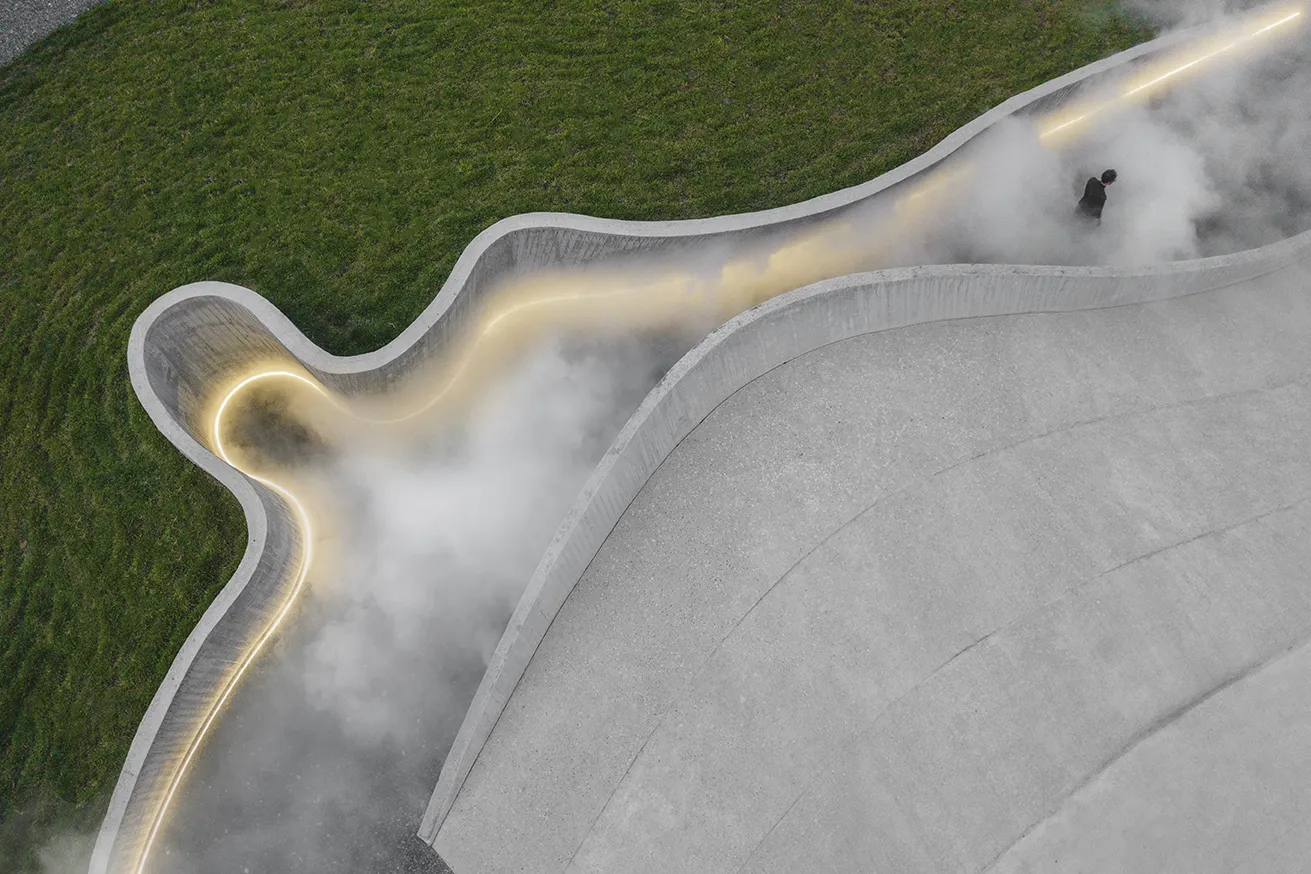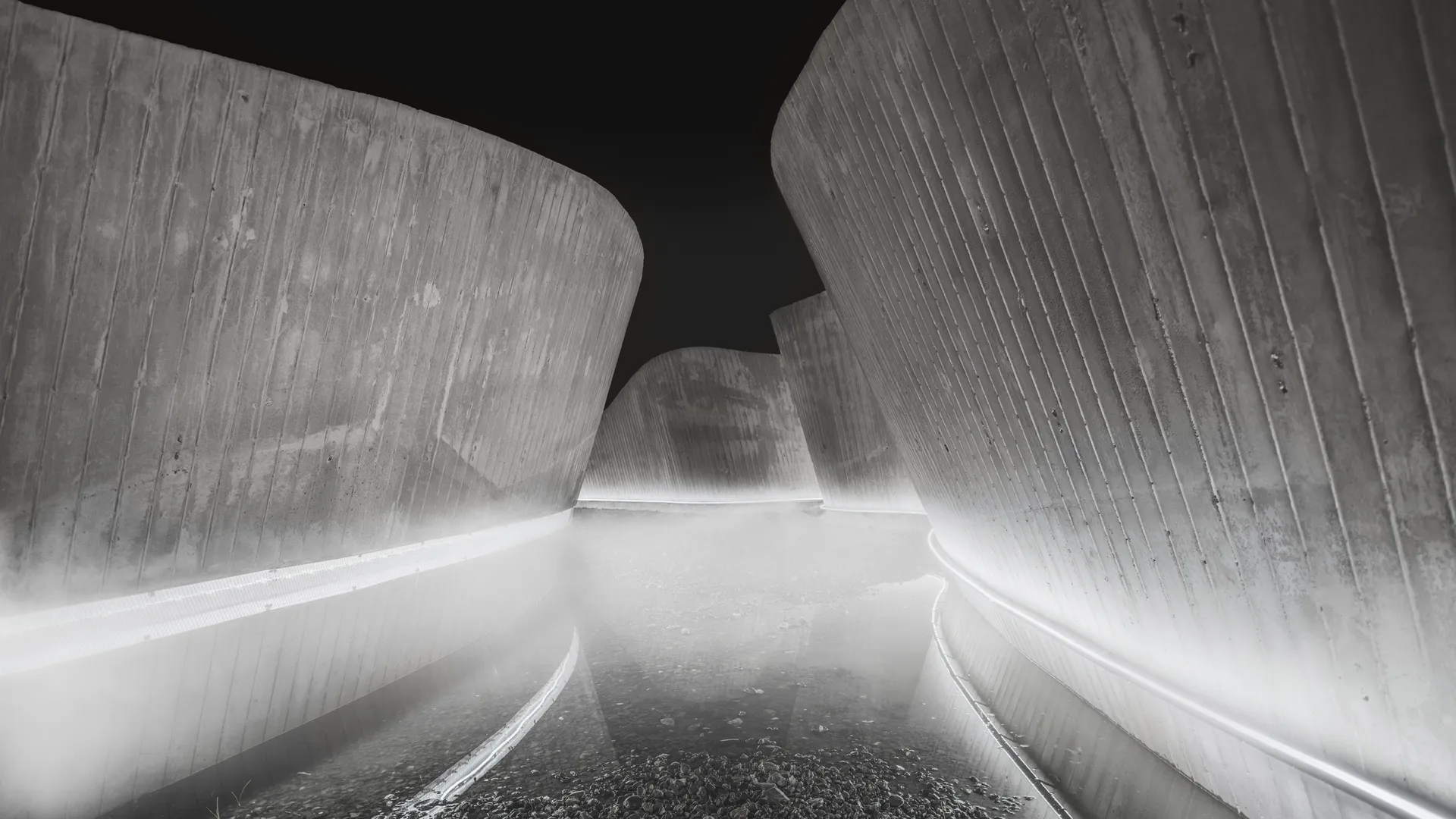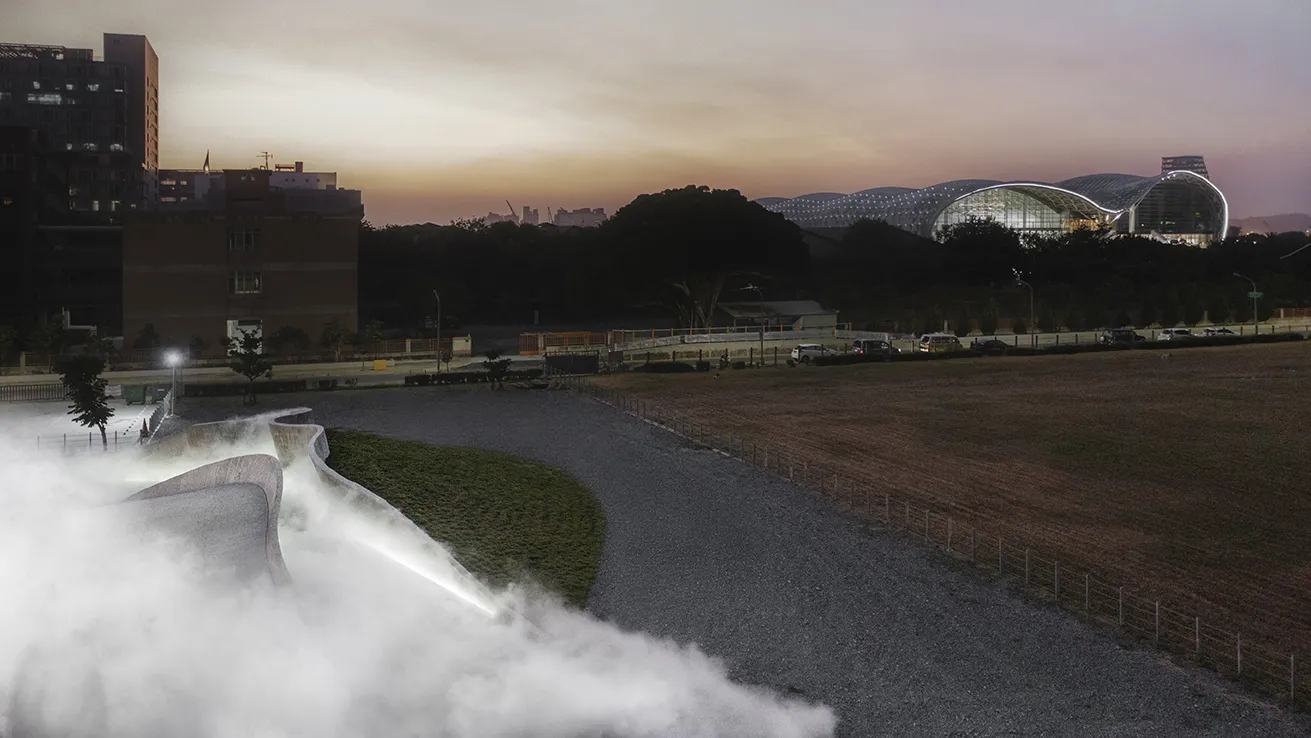


![[創作概念] 在基礎線型上我們擷取了高雄港灣的岸線,將其轉化後成為了配置上的主要軌跡。兩座丘體代表著城市與港灣的主體,由漸高的牆面與逸散的水霧將人引入並圍塑其中。在霧氣彌漫中的沈浸式體驗,吸引著人們去體驗和想像城市與港灣的融合。 本作品位於基地西北角的礫石地,利用地景、曲線牆面、夜光/反光與水霧元素,將人群由集盒中心廣場引導至此處,有效充分利用整體基地空間。並在集盒相對動態/紛鬧的建築體配置中,創造一處相對靜謐的表現性空間,暫時可以由城市喧囂中脫離而出。 利用分區與結合概念,呈現獨立又融合的作品表情。這是一件為所有背景與年齡的參觀者所創作的公共地景藝術,用一種隱喻的景觀方式,以及直接而有趣體驗,讓所有人都可屬於此場所的記憶。](https://taipeidaward.taipei//Upload/FileManager/da51407b-9de7-4cc8-a726-71a8d01bc17c.webp)
【獎項 Prizes】 銀獎 Silver Award
【國家或地區 Country/Region】 台灣Taiwan
【公司/團隊 Company/Group】 一起設計+偶然設計
【設計師姓名 Designer】 趙尉翔 Ta-Chi Ku,曾令理 Wei-Hsiang Chao,辜達齊 Ling-Li Tseng
【作品介紹 Description】
高雄水水 水水,在台語中意指亮麗。我們提出了四個裝置藝術計劃,集合打造一個具有新灣意向、地景再造、互動休憩以及感官體驗的創作。形塑高雄與港灣一起再生、高雄與水岸的互動,共創高雄與港灣的水水願景。 [城市與港灣的交織] 曾經,港區對於高雄是一道封閉的界線,越是地處臨近港灣卻越屬於城市的邊緣地帶。港口對於城市而言似乎可近又陌生,歷史上這個灣岸不斷的變化,自成一格的運行與發展。 現在,亞洲新灣區的計劃,讓這個港灣城市有了再生的願景,將人與港之間的關係重新縫補。透過城市轉型與城市意向的重新塑造,並將歷史與空間斷帶重新連結。 未來,高雄作為台灣的海洋首都,將市民生活重新引領至水岸,並進一步擴展至海洋。高雄將以港灣為主體,形成城市永續發展以及邁向國際級城市的願景。 [城市地景裝置藝術] 城市空間公共性的產生,在於藉由人與人的共享與互動交流。我們希望本次公共藝術作品的介入與置入,不作為一個排他的佔據物,而是更能夠提升場所的公眾性、體驗與集體記憶點。 本次作品我們試圖在不同層面上回應亞洲新灣區願景: -在願景層面上,傳達象徵本計劃的精神與重要性,做為一座微型城市願景館。 -在都市層級上,標記出所在基地位於新灣區核心點,現地感受與港灣之近距離。 -在場所層級上,打造一個具體驗感的地景,增加本場域的活力並創造新的城市景點。 [創作概念] 在基礎線型上我們擷取了高雄港灣的岸線,將其轉化後成為了配置上的主要軌跡。兩座丘體代表著城市與港灣的主體,由漸高的牆面與逸散的水霧將人引入並圍塑其中。在霧氣彌漫中的沈浸式體驗,吸引著人們去體驗和想像城市與港灣的融合。 本作品位於基地西北角的礫石地,利用地景、曲線牆面、夜光/反光與水霧元素,將人群由集盒中心廣場引導至此處,有效充分利用整體基地空間。並在集盒相對動態/紛鬧的建築體配置中,創造一處相對靜謐的表現性空間,暫時可以由城市喧囂中脫離而出。 利用分區與結合概念,呈現獨立又融合的作品表情。這是一件為所有背景與年齡的參觀者所創作的公共地景藝術,用一種隱喻的景觀方式,以及直接而有趣體驗,讓所有人都可屬於此場所的記憶。
Kaohsiung Shui Shui “The body knows and remembers. Architectural meaning derives from archaic responses and reactions remembered by the body and the senses.”. - Juhani Pallasmaa Kaohsiung is a southern city surrounded by the mountains and the ocean. After a hundred years of modernization, this tropical city has become an important industrial anchor in Taiwan for the past few decades. However, there has always been a distance between Kaohsiung and Kaohsiung’s surrounding landscape. Through inserting a landscape installation alongside the Kaohsiung Harbor area, we narrate an alternative narrative of our imagination towards nature softly comes into view: We pursue tangible satisfaction and a civilized society constructed by rationality. But we also crave for spirituality and the purely perceptive physical experience. The installation consists of an 18-meter and a 36-meter-long free-form concrete walls, which form an artificial canyon with a varied-width opening. The fog emerges occasionally, diffusing from the walls into the canyon. Walking in this foggy, twisted, and twirled path, one couldn’t find the exit. Lost and overwhelmed by unfamiliarity, the body senses have once again taken charge as the sole means of communication. Outside the canyon, the concrete walls are covered with meadow slope on one side, and terrazzo ramp with inlaid luminous stones on the other. As daylight slowly fades away, the installation serves as a discreet night light in the city. Devoid of any certain functionality, everyone now defines what this place is on their own. Perhaps our exploration towards nature does not necessarily rely on the actual nature. But rather relies on the animalistic movement of reflection that takes place within the milliseconds, the pure desire to emancipate the fully charged energy, or the sense of freedom to arbitrarily get across. Humans’ yearning for nature is never mere nostalgia. It is in fact deeply rooted in our habit through millions of years of biological evolution. In the blink of an eye, we are trapped in our own colossal artifacts. By means of the involvement of artificial and technological intervention, the abstract sensuous experience is made possible to reappear in the urban context. Urban/natural, artificial/organic, because of the existence of humanity, the two get reconciled.



